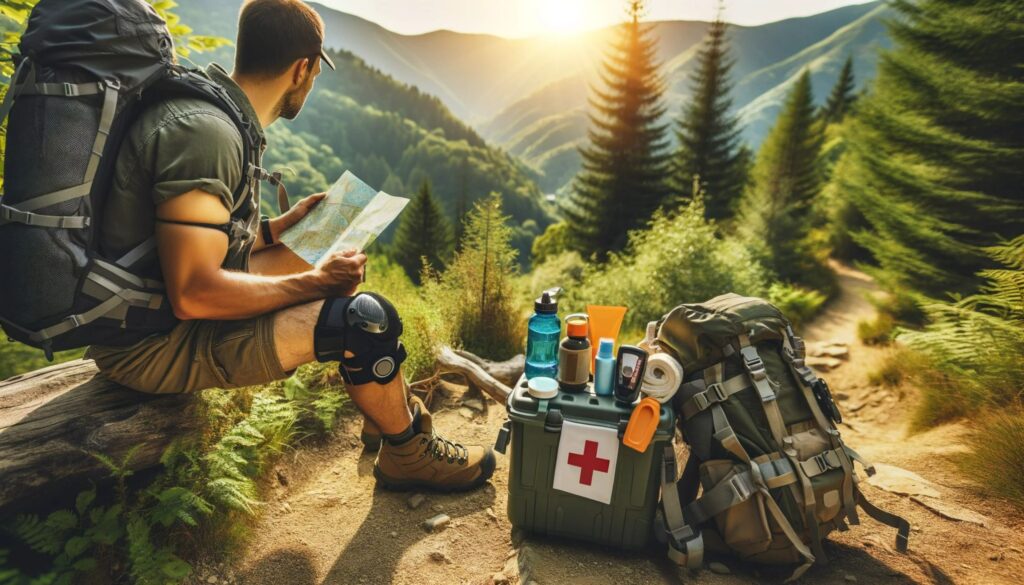Embarking on a backpacking journey is an exhilarating way to explore the world. It’s about immersing yourself in new cultures, landscapes, and experiences. However, to fully enjoy the adventure, it’s crucial to be well-prepared. “Backpacking Essentials: A Comprehensive Guide for Adventure Seekers” is designed to equip you with the knowledge and tools needed for a successful and enjoyable backpacking experience.
Understanding Backpacking Basics
Choosing the Right Backpack
- Size and Fit: Select a backpack that fits your body correctly and has enough capacity for your trip duration.
- Features and Accessibility: Look for features like multiple compartments, water-resistant materials, and adjustable straps for comfort and convenience.
Packing Efficiently
- Lightweight Essentials: Opt for lightweight and versatile clothing and gear.
- Organizational Tools: Use packing cubes and compression sacks to maximize space and keep your belongings organized.
Essential Gear for the Backpacker
Navigation Tools
- Maps and Compass: Even in the age of GPS, traditional navigation tools are essential for remote areas.
- Technology Aids: Consider a lightweight GPS device or smartphone apps with offline maps.
Shelter and Sleeping
- Quality Tent: Choose a lightweight, durable tent suitable for the weather conditions you’ll encounter.
- Sleeping Bag and Pad: Invest in a compact, weather-appropriate sleeping bag and a comfortable sleeping pad.
Cooking and Water Purification
- Portable Stove and Cookware: Pack a lightweight stove and minimal cookware for preparing meals.
- Water Purification Methods: Bring water purification tablets or a portable water filter to ensure access to clean drinking water.
Health and Safety on the Trail
First-Aid Kit
- Essential Supplies: Your kit should include bandages, antiseptic, pain relievers, and any personal medications.
- Knowledge of Use: Familiarize yourself with basic first-aid procedures before your trip.
Safety and Emergency
- Emergency Whistle and Fire Starter: Carry these for emergency situations.
- Weather Awareness and Protection: Pack appropriate clothing and gear for weather changes and understand the signs of hypothermia and heat exhaustion.
Sustainable Backpacking Practices
Leave No Trace Principles
- Environmental Awareness: Follow the Leave No Trace principles to minimize your environmental impact.
- Waste Management: Carry all your trash with you and dispose of it properly.
Respecting Local Communities
- Cultural Sensitivity: Respect local customs and traditions.
- Supporting Local Economies: Purchase from local vendors and use local services when possible.

Mastering the Art of Backpacking
Embarking on a backpacking adventure is as much about the journey as it is about the destination. To ensure a fulfilling experience, it’s important to master certain aspects of the backpacking lifestyle.
Building Physical and Mental Stamina
- Pre-Trip Conditioning: Engage in physical activities like hiking, jogging, or cycling to build endurance.
- Mental Preparedness: Be mentally prepared for challenges such as fatigue, homesickness, and unexpected changes in plans.
Packing Like a Pro
- Multi-functional Gear: Choose gear that can serve multiple purposes to reduce weight and save space.
- Layered Clothing: Opt for layered clothing to easily adjust to varying temperatures.
Navigating Solo and Group Dynamics
Solo Backpacking
- Self-Reliance: Develop skills like map reading, camp setup, and basic first-aid.
- Staying Connected: Regularly update family or friends about your location and plans.
Group Backpacking
- Clear Communication: Ensure everyone’s expectations and responsibilities are clear and agreed upon.
- Group Equipment Sharing: Coordinate gear sharing to distribute weight and minimize duplication.

Tech and Tools for the Modern Backpacker
Gadgets and Power Solutions
- Solar Chargers and Power Banks: Keep your electronic devices charged in remote areas.
- Advanced Navigation Tools: Consider devices like GPS watches or satellite messengers for enhanced safety.
Apps and Online Resources
- Trail and Camping Apps: Utilize apps for trail maps, campsite locations, and local information.
- Online Forums and Communities: Engage with online backpacking communities for tips, advice, and updates.
Embracing the Wilderness: Final Reflections on Backpacking
In conclusion, backpacking is more than just a way to travel; it’s a journey into the heart of the wilderness and within ourselves. It challenges us, teaches us, and rewards us with experiences that are as vast and varied as the landscapes we traverse. As you venture out with your backpack, remember that each step is a story in the making, a chance to connect with the world in its rawest form. From the quiet of the forests to the camaraderie of fellow adventurers, the world of backpacking is rich with opportunities for discovery and growth. So go forth with respect, curiosity, and an open heart, and let the trails guide you to extraordinary places and perspectives. Happy backpacking!
FAQs for First-Time Backpackers
How do I choose a destination suitable for backpacking?
Consider your experience level, the climate, terrain, and any cultural or language barriers. Start with destinations known for being backpacker-friendly.
What is the best way to budget for a backpacking trip?
Research costs in advance, including transportation, food, accommodations, and activities. Always have a contingency fund for emergencies.
Can I backpack solo?
Yes, solo backpacking can be a rewarding experience, but ensure you are prepared, inform someone of your itinerary, and start with shorter, well-traveled routes.
How can I backpack responsibly in sensitive ecosystems?
Research the ecosystem, follow designated trails, and avoid disturbing wildlife or natural habitats.
What are some tips for backpacking in extreme weather conditions?
Understand the risks, pack appropriate gear, and always have a backup plan. Consider taking a course in wilderness survival for more extreme adventures.

